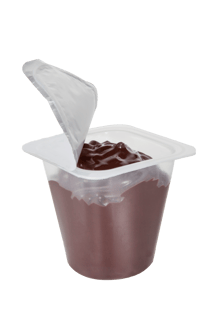 There’s something about eating a snack-pack that makes me feel like a kid again. Maybe that’s because when I was a kid, peel-and-eat, pre-portioned snacks were marketed towards parents as a convenient, take-it-with-you, portion-controlled option for school lunches.
There’s something about eating a snack-pack that makes me feel like a kid again. Maybe that’s because when I was a kid, peel-and-eat, pre-portioned snacks were marketed towards parents as a convenient, take-it-with-you, portion-controlled option for school lunches.
Today’s snack-pack packaging has evolved to include products marketed to adults seeking portable, healthy, and high-quality snacking solutions. According to TrendHunter, snack packs appeal to the “nostalgia-driven market of Millennials entering the workforce,” and brands are “… elevating their offerings with premium ingredients remain cognizant of leveraging classic-yet-convenient packaging of familiar childhood treats…”
For brand owners and packaging developers, this evolution creates new performance demands for snack pack packaging materials — from barrier protection to processing compatibility and sustainability. Continue reading to see how ICPG addresses these needs with innovative solutions.
What Are the Barrier Requirements?
One of the primary elements in extending shelf life for snack pack packaging is understanding the required OTR (Oxygen Transmission Rate) and MVTR (Moisture Vapor Transmission Rate) specifications, then developing a material structure with the appropriate barrier characteristics to protect the product throughout its desired shelf-life performance.
Development of high performance structures can be achieved through a multi-layer coextrusion process leveraging materials such as EVOH to achieve the required OTR requirements. In addition, it is critical to ensure optimal material distribution to meet the minimum barrier thickness given depth of draw and avoiding sharp angles during container design.
Optimizing the material structure through the use of innovative materials, such as ICPG's XPP Enhanced Barrier Polypropylene, creates opportunities to extend the shelf-life of both shelf-stable and refrigerated single-serve snack pack products. XPP solutions provide up to 90%/90% OTR/MVTR improvements vs traditional PP and 100%/150% OTR/MVTR improvements vs traditional PS properties before the incorporation of EVOH for a mono-material, simplified and recyclable barrier material structure.
These material innovations also enable down-gauging and design flexibility, maximizing usage and capacity while ensuring performance without over-engineering.
What Is the Processing Method?
Whether using pre-formed containers or roll stock for form fill and seal applications, the processing method selected for snack pack packaging directly impacts material choice, package integrity, and efficiency.
Common thermoformed rigid packaging for shelf-stable snack pack products can be used with processing and sterilization techniques such as:
- Aseptic
- Retort
- Hot-fill
- HPP
- MAP
- Fill-seal
- Form-fill-seal
- Cold fill processes
ICPG’s XPP Enhanced Barrier Polypropylene is compatible with these processes, offering increased stiffness and controlled shrinkage to improve efficiencies.
What Is the Best Material Choice?
Today there are more choices than ever when considering the best material for shelf-stable snack-pack products. The ideal rollstock must:
- Meet barrier performance and shelf-life requirements
- Provide opportunities for customization and brand differentiation
- Address regulatory and sustainability concerns
ICPG provides snack pack packaging solutions using traditional substrates such as polypropylene, polystyrene, and PET with enhanced performance and protection capabilities for direct food contact and extended shelf-life requirements.
The type of packaging and processing method as well as the product’s target shelf-life can also affect material structure design. For example, a commercially packaged multi-compartment shelf stable container needs to provide the required level of barrier protection while being aesthetically appealing and providing the expected level of functionality. Barrier specifications determine whether a non-barrier, low-to-medium, or high-barrier coextruded structure is best suited.
In each case, ICPG manufactures these structures in clear, tint and opaque formats with a variety of additional customizable options to increase brand awareness and differentiation.
Additionally, with increasing industry pressures on sustainability and Proposition 65, ICPG's XPP enhanced barrier polypropylene offers a fully recyclable & Proposition 65 compliant, solution that integrates seamlessly with existing processes such as form-fill-seal.
Advancing Snack Pack Packaging with ICPG
Snack pack packaging demands performance, protection, and sustainability — and ICPG delivers material innovations designed to meet those needs. From extended shelf life to processing efficiency and recyclability, our XPP Enhanced Barrier Polypropylene and other rigid rollstock solutions give brands the flexibility to design packaging that works for both consumers and the environment.
Download our Snack Pack Packaging Solutions Info Sheet to learn how ICPG can help you optimize your packaging strategy or reach out to our team to get started today.




